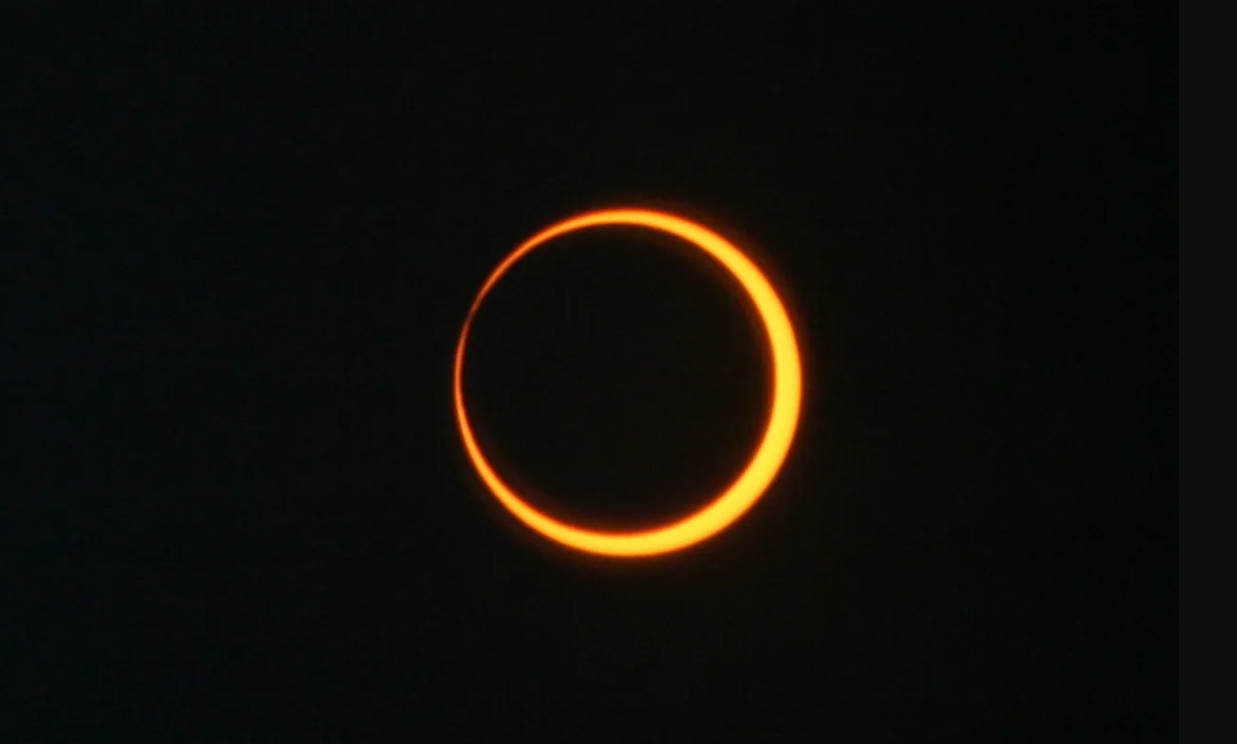The sun is set to be nearly entirely blocked out by the moon on Saturday, when the U.S. will be treated to an annular solar eclipse.
That day, the eclipse will begin to creep across the U.S., starting in Oregon at about 9:13 a.m. PDT before moving across Nevada, Utah and New Mexico, skirting past Colorado and Arizona as it goes. It will end in the U.S. at around 12:03 p.m. CDT as it passes through Texas. It will then continue across central Mexico and South America before passing into the Atlantic.
An interactive Eclipse Explorer map created by NASA‘s Scientific Visualization Studio shows the best time to see the eclipse in each state. It allows the user to see exactly where the shadow will be and what the sun will look like at a given time in a specific place.
The event is an annular eclipse, one of several types of solar eclipses, which occur when the moon passes between the Earth and sun and blocks out the sun’s light, casting a shadow across part of the Earth. This shadow moves as the Earth rotates, leaving a dark path across sections of the planet’s surface.
Total solar eclipses occur when the moon completely covers the sun, while annular eclipses result in a so-called ring of fire that is visible around the moon because it is slightly further away from the Earth and some of the sun is visible around its circumference. This occurs because the moon is at its farthest point from the Earth in its slightly oval-shaped orbit, known as the apogee, and it doesn’t quite block out the entire disc of the sun.
“The moon’s orbit around the Earth is an ellipse, which means that the moon can sometimes be as much as 10 percent closer than average and 10 percent farther than average from Earth,” Vahé Peroomian, a professor of physics and astronomy at the University of Southern California, told Newsweek. “Because of this, the moon can appear to be 10 percent larger or smaller.”
He continued: “On average, the sun and the moon are the same angular size in the sky, about one-half degree across, measuring the sky 90 degrees from the horizon to the point directly above you. But if the moon is at its farthest from Earth during a solar eclipse, then its angular size is smaller than the sun and it doesn’t cover the entire disk of the sun, giving us an annular eclipse.”
Solar eclipses—including partial eclipses, when the moon covers only part of the sun—occur around every 18 months somewhere across the globe. The 21st century will see a total of 224 eclipses: the 2020s alone will have six total eclipses. The next eclipse in the U.S. will be a total eclipse, occurring on April 8, 2024, and will be visible in its totality across Texas, the Midwest and the Northeastern states.
Eventually, as the moon moves further and further away from the Earth over the next few million years, all eclipses will be annular rather than total.
“It’s estimated that in about 600 million years the moon would have moved far enough away from Earth that it will always appear too small to cover the sun, and we will no longer have total eclipses and only annular or partial eclipses,” Peroomian said.
Those wishing to observe the eclipse directly are warned not to look directly at the sun without eye protection, as this can cause major damage to the eyes.
“The best way to safely view a solar eclipse is indirectly, by projecting an image of the sun,” Kerss said. “You should never look directly at the sun.”
“A simple pinhole projector, a tiny hole poked through a piece of card, will cast an image of the sun in its shadow, revealing the phase of the eclipse,” he continued. “Even a colander makes a very effective eclipse projector, its many tiny holes each producing an image of the sun.”
People outside of the eclipse’s path, or those who will have overcast skies during the event, can watch it via a NASA livestream broadcast.
Do you have a tip on a science story that Newsweek should be covering? Do you have a question about solar eclipses? Let us know via science@newsweek.com.
Update 10/12/23, 11:35 a.m. ET: This story was updated with a comment from University of Southern California professor Vahé Peroomian.

